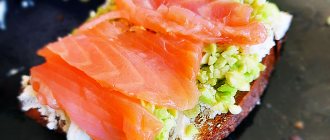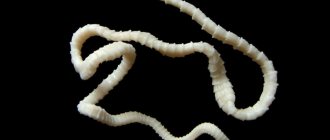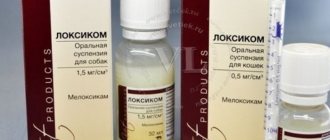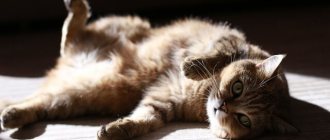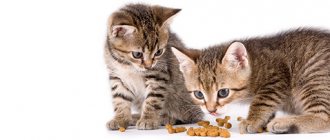Recently, the phrase “a cat is an obligate predator” has often been heard. And it is true. Cats are not omnivores. But if you think that a predator needs to be fed meat, then you are deeply mistaken. Eating pure meat leads to serious health problems due to an imbalance of minerals, primarily calcium and phosphorus, and a lack of vitamins. Meat is an excellent source of complete protein, but otherwise it has a poor composition. Therefore, offal for cats is not a delicacy or pampering, but a necessary component of the diet.
The secret to the survival and relative well-being of the wild ancestors of the domestic cat was eating the prey whole. Usually it is a small rodent or bird. In addition to meat, the cat receives bones and cartilage, fatty brain, stomach and intestines with all contents, liver, kidneys, lungs - in other words, all internal organs.
Cats eat whole mice
Feeding offal in addition to muscle meat allows you to balance the cat’s diet without numerous vitamin and mineral supplements. Another advantage is that by using different by-products, you can easily play with the calorie content, reducing or increasing the nutritional value depending on the pet’s needs.
At the same time, you need to carefully feed the internal organs of various animals to your cat, taking some precautions. In the article I will talk about what by-products to give to your pet and in what quantity, so that the benefits from them outweigh the possible negative consequences. Author of the article: Olga Shiltsova, practicing veterinarian, author of the books “Dachshund of Fate” and “Tails of Fortune”
How often to give your cat by-products, and in what quantity?
The share of by-products in the diet is calculated depending on their type. Muscular organs - the tongue, heart, gizzard of the bird - are given as part of the “meat” part of the diet, the total share of which is about 70%.
Internal organs (liver, kidneys, lungs, brains, spleen) provide 10-15% of the total diet. Another 10% should come from bones. Their sources are rabbit or poultry ribs, chicken necks and heads, and quail frames. The share of meat and bone ingredients is about 20%.
Chicken neck for a cat
If the cat has not eaten offal before, it needs to be introduced to it gradually, starting with microscopic quantities. When switching from dry food to natural food, the cat is first fed muscle meat, and then they begin to give various by-products, monitoring the pet’s individual reaction.
A variety of by-products is good for your pet
Muscle by-products can be fed to your cat daily, and some are fed 1-3 times a week to add variety to the diet. If, in response to feeding the internal organs, the cat's stool becomes thinner, their quantity is sharply reduced and the digestive tract begins to re-acclimate, gradually increasing the volume to the desired level.
Next, we will take a closer look at some types of by-products and their optimal quantity.
Types that can be given to a cat
Research by felinologists on the selection of the optimal diet for cats identifies the following types of offal from different animals:
The most useful product for your pet will be beef.
- Cows. Giving beef liver is very useful, as it contains the optimal amount of proteins, fats and vitamins.
- Chicken. It is possible to feed your cat chicken liver, but it contains fewer nutrients than cow liver and also contains more fat. There is a risk of gastrointestinal upset.
- Piglet. Pork liver is very harmful, as it contains high amounts of fats and toxic substances. Veterinarians do not recommend including it on the menu. Raw food is strictly prohibited.
- Ray-finned fish. Cod liver is rich in vitamins and polyunsaturated acids, but it should not be given to pets due to its high fat content.
By-products for cats are the only source of calcium
The most common mistake in natural feeding of cats is a violation of the ratio of calcium and phosphorus in food. For adult animals, the Ca:P balance should be approximately 1.2-1.7:1, for kittens 2:1. At the same time, most products, including meat, contain much more phosphorus than calcium.
The only chance to enrich the natural diet with calcium is to feed your pet not only meat, but also bones. To do this, chicken necks and heads are introduced into the diet.
Chicken heads: Cat's dinner can look creepy
Depending on the size and habits of the cat, chicken necks give:
- Entirely;
- Cut into pieces;
- Scrolled through a meat grinder as part of a meat mix.
Whole, sliced and twisted chicken necks
The hard and sharp beak is cut off from the chicken heads, and the heads themselves can first be beaten with a hammer.
Rules for feeding cats with bone by-products:
- Bones are given ONLY IN RAW FORM. Boiled bones are dangerous for cats.
- Bones should make up about 10% of the diet, which means 20-30% meat and bone ingredients.
- If the cat's feces become dry, white, or bowel movements are irregular (constipation), bones are excluded from the diet or their quantity is reduced.
- They only give spongy bones, not tubular bones (legs and wings are not allowed).
If you are afraid to give your cat bones or she cannot eat them for health reasons (diseases of the gastrointestinal tract, lack of teeth, etc.), calcium should be added to the diet in the form of commercial veterinary supplements.
What is the harm of the product for a cat?
Cats are predators by nature. Therefore, many owners believe that feeding their cat raw liver or meat is the norm. After all, such animals are very dexterous, successful hunters, and often pamper themselves with fresh prey.
But it is in meat, in raw liver, that there may be larvae or eggs of many of the culprits of helminthic infestations and other parasitic diseases. Infection causes significant harm to the health of the pet, is the start of the development of many pathologies, and sometimes leads to the death of the cat.
Liver in any form is a “heavy” product; digesting a portion of it, especially a large one, requires a long period of time. The product can cause undesirable reactions from the cat’s intestines, these are two opposite phenomena - constipation or diarrhea. Each of them causes suffering.
© shutterstock
By-products to increase calorie intake
Some parts of the carcass contain woefully little protein but are high in fat. And some, such as testes, are a source of protein and fat at the same time. Fatty by-products should not be given to cats with impaired liver or pancreas function, as well as animals prone to obesity. But they serve as an excellent energy boost, for example, for nursing cats or stud cats.
Testes (bovine, lamb)
Although the seeds are considered a delicacy in many cuisines around the world, they are quite difficult to find for sale. They don’t have to be included in your cat’s diet for it to be complete, but if the opportunity arises, be sure to let your pet try them.
Beef testes
The testes contain a lot of protein and fat, B vitamins and microelements (zinc, manganese, copper, nickel).
There is no need to be afraid of the hormones supposedly contained in the testicles. Their concentration in the testes is negligible, since all produced testosterone immediately enters the blood.
The testes are given raw or lightly boiled (7 minutes after boiling). Before giving them to a cat, remove the thick shell from the testicles and cut them into pieces. The norm is 5-10% of the diet, while it is permissible to feed the testes in a separate feeding, without mixing them with meat.
Beef udder
Udder is a cheap and nutritious product, but I recommend feeding it to cats with caution. The dry udder consists mainly of fat and rough connective tissue, which is difficult to digest. The milk udder has a more delicate consistency and a pleasant sweetish milky smell and taste. But cows are rarely slaughtered for meat during lactation without a good reason; usually these are sick animals. Therefore, the milk udder must be carefully checked for signs of mastitis (pus, inflamed areas).
The udder contains about 12% incomplete protein and 14% fat. It is given to cats in order to increase the calorie content of the diet, in an amount of no more than 5% of the total diet. This product is fed both raw and cooked (the broth after cooking is not used for feeding). The udder has a rubbery consistency, it is very difficult to chew or bite off a piece, so you need to cut it into convenient pieces in advance. The easiest way to cut a frozen product is to use a very sharp knife.
Brain
Beef brains can be difficult to find commercially because they are perishable. But if you give your cat chicken heads, then when she eats them, she also gets brains. The value of brains lies in the fats they contain. These are omega fatty acids, lecithins and cholesterol. The brain also contains a lot of choline (B4).
Beef brains, if you were able to buy them, are not fed in their pure form, but are added to the meat mixture. The high fat content of this offal causes severe diarrhea in cats if the dosage is overdone. Brains are given in the amount of 2% of the total diet. They can be especially useful for cats exhausted by pregnancy and lactation, as they increase the calorie content of food.
Benefits for the animal
Liver should not be given regularly to cats with light fur, as the hairs will turn brown or acquire a yellowish tint.
According to veterinarians, offal cannot be the main diet, but they complement meat and fish dishes. Feeding your cat liver is beneficial, as this product is rich in retinol, which increases bone density, and B vitamins, which are responsible for visual abilities, skin elasticity, coat condition and growth of the pet. Ascorbic acid and tocopherol help strengthen natural immune defenses. Veterinarians note that if a kitten is regularly given small portions of liver, then it will not have a vitamin deficiency. The beneficial effects for cats are due to the following features of natural meat by-product:
- high concentration of microelements - Na, Fe, P, Cu, Mg and Zn;
- fat content - less than 5-6%;
- presence of essential amino acids;
- ¼ components - protein;
- replenishment of vitamin deficiency in tocopherol, carotene, cholecalciferol and ascorbic acid.
Lungs - is it worth giving them to a cat?
One of the most useless beef by-products is lung. It is made of connective tissue and is difficult for cats to digest. In many animals, eating “airy” offal causes vomiting. Therefore, it is given in small quantities and in combination with meat or other organs.
Beef lung
It is quite possible to create a complete diet without using lungs, but if the cat likes their taste, they are fed in a volume of 5-15% of the diet. The peculiarity of this by-product is its low calorie content, which can be useful when preparing a diet for overweight animals.
If you cut the lung into small pieces and dry it in the oven, you will get an excellent delicacy. It is given to cats between main feedings.
Flaws
- Liver contains a potentially toxic amount of vitamin A that can cause cat poisoning. If your pet loses appetite and weight, limps, feels weak, suffers from constipation or allergies, consult a doctor immediately and be sure to mention that your cat has recently eaten liver.
- Raw liver can be contaminated with bacteria, particularly salmonella. If parasites enter the pet's body, the following symptoms appear: high fever, lack of appetite, vomiting, diarrhea.
How to protect chicken liver for cats from worms and bacteria
To rid the offal of bacteria and worms, heat treatment is carried out. The pieces are boiled for 15 minutes, no longer, otherwise they will lose their nutritional value. Frying helps protect against helminths. But the liver cannot be fed to animals in this form. Therefore, baking becomes an alternative.
To protect the liver from parasites, you need to put it in the freezer for two weeks. Low temperatures kill most pathogenic bacteria and worms. To be on the safe side, scald it with boiling water before serving the raw product.
Which type of liver to choose?
Chicken is one of the ingredients commonly found in cat food. It is a source of omega-3 and six fatty acids, so it is safe for cats in limited quantities and can even improve your pet’s eyesight and coat quality. However, it should be remembered that excessive consumption of chicken liver will most likely cause stomach upset in the animal. Therefore, if you decide to add liver to your cat's diet, start small. Once every 3-5 days, offer your pet half a tablespoon of liver and gradually increase the frequency if everything is fine. Keep in mind that due to the abundance of fatty acids, chicken liver can cause weight gain. If your four-legged friend is no longer slim, it is better to avoid this product.
As for beef liver, its main advantage is the presence of taurine, as well as other useful substances: iron, selenium, zinc and biotin. And yet, according to veterinarians, beef liver should make up no more than 5% of an adult cat’s diet. Otherwise, your pet may suffer from indigestion.
When choosing the type of liver, focus primarily on the pet’s preferences and well-being. Beef liver will appeal more to adult cats, while chicken liver will appeal to growing cats. Your pet may be happy with other types of liver, for example, duck, but the main thing is to maintain moderation and control your animal’s stool.
If your cat doesn't eat liver, she's missing out.
Not only is liver delicious, it is an inexhaustible source of nutrients for maintaining health. This largest gland has countless benefits, and it's one that your pet may be lacking in their diet. What's good about the liver?
Liver is an important part of the raw diet, it can be called a superfood for carnivores, it can be called nature's multivitamins. This is because it is very rich in essential substances for the body.
- Vitamin A is a powerful antioxidant. It supports digestion and reproductive organs.
- Vitamin D is a vital substance for the immune system. Helps protect against cancer, autoimmune diseases and infections. It also maintains strong bones and muscle strength.
- Folic acid and B vitamins are a salvation from anemia. They help not to get tired for a long time, ensure a healthy psyche and nervous system.
- Iron is one of the most important microelements in the body. With its participation, hemoglobin is formed, it maintains brain function, regulates body temperature, and transports oxygen to every cell of the body. A lack of iron depletes the antibodies and T cells of the immune system.
- Copper and zinc support healthy bones and joints, skin, coat, and immunity.
Liver is an excellent source of protein, which contains fewer lipids than muscle meat.
Liver vs muscle meat
Liver is much richer in vitamins and minerals than muscle tissue. For example, compared to lean muscle meat, beef liver contains:
- 6 times more iron
- 23 times more calcium
- twice the amount of niacin
- 16 times more vitamin D
- 100 times more copper
- 5 times more choline
- 20 times more zinc
- 260 times more magnesium
- 6 times more phosphorus
- 1200 times more vitamin A
- 1300 times more manganese
- 1/3 of total fat
- 1/3 amount of saturated fat.
And these are amazing numbers that show what wealth the liver provides the body.
Free-range animals will have higher levels of vitamins and minerals in their livers than those kept in stalls and fed formula feed. However, any type of liver will provide excellent nutrition for your cat. Is liver safe?
Many people believe that the liver can be harmful because it is an excretory organ that removes toxins. This is true, but only in one part - the liver actually removes toxins. But this organ processes and breaks down harmful substances so that the body can remove metabolic products. Toxins are not stored in the liver, it is clean. Often, even muscle meat contains more toxins than liver. Therefore, your cat will not be poisoned. But there is another very important function of the liver in the diet - maintaining liver health.
The principles of natural medicine, including traditional Chinese veterinary medicine, state that eating an organ helps maintain and heal a similar organ.
But even if you doubt the tenets of medicine different from the generally accepted one, look at the vitamin and mineral composition of the liver, and the conclusion about the benefits of this product for your pet’s liver will become obvious. Which liver is better?
This organ is a treasure in terms of the content of useful substances. Therefore, your cat can be fed the liver of any animal: beef and pork, rabbit and chicken, lamb and duck, turkey and sea fish liver - everything will be beneficial. It is better to alternate protein products, since they differ from each other in composition. For example, beef liver, compared to chicken liver, contains more nutrients such as:
- magnesium – ensures healthy cells, muscles and bones
- phosphorus – together with calcium, strengthens teeth and skeleton
- zinc – antioxidant, supports skin health and immunity
- Copper – supports iron metabolism, red blood cell production, coat color
- manganese – provides some metabolic processes
- Calcium – essential for healthy bones and muscles
- iron – carries oxygen into the blood, prevents anemia.
However, chicken liver is richer in selenium, an antioxidant important for thyroid health and strong immunity, as well as vitamins such as:
- Niacin (vitamin B3) – promotes cardiovascular, brain and skin health
- thiamine (vitamin B1) – creates energy in cells
- Retinol (a beneficial form of vitamin A) – an antioxidant essential for healthy eyes and skin
- Vitamin C – supports healthy joints and promotes wound healing
- Vitamin D – essential for healthy bones, skin and strong immunity.
There are also differences in fat content.
Chicken liver, on average, contains 30% more fat than beef liver. And, like chicken meat in general, chicken liver contains more polyunsaturated fatty acids than beef liver. These indicators can be ignored when compiling a cat’s diet. After all, liver is much less fatty than muscle meat, and the amount that a cat needs to obtain nutrients is minimal. Raw or cooked?
In order for the cat to receive the maximum nutrients, the liver should be fed raw, because heat treatment kills many vitamins and denatures the protein.
According to the USDA food database, heated liver loses 40% of iron, magnesium and vitamin A, 55% of vitamins B3 and B6, 35% of folic acid, 25% of copper and vitamin C. Obviously, a cat will get much more from a raw product. more healthy, and you need to feed it raw. If your cat doesn't like raw liver
Not every cat will happily eat a new product, much less liver. Some people find the smell suspicious, others are not happy with the consistency. In such cases, camouflage will help. You can grind the liver in a blender or mince it and mix a small amount with the meat. It happens that cats do not like liver in its pure form, but they happily eat the “sauce” made from ground liver and sour cream. A cat can be introduced to this useful organ by feeding it a whole animal carcass, for example, a small chicken, or by making a mixture of meat, meat bones and organs, which will include a small piece of liver.
If such tricks do not help, you can resort to more radical methods.
Fry the liver in a frying pan with a minimum amount of fat or bake in the microwave. There is no need to achieve complete frying; the pieces should only slightly change the texture and smell. Many cats find the aroma of fried liver appetizing. You can also dry the liver in a dehydrator. At such low temperatures, nutrient losses are negligible. Plus, you'll get a great treat for your cat. Chicken, duck or turkey livers are perfect for drying - no need to cut them. How much liver should a cat have in her diet?
The amount of liver in a cat's diet depends on whether she receives other organs. In wild animals, the volume of all organs, including skin, is approximately a quarter of body weight. If there are no other organs in the diet besides the liver, then they cannot be replaced with liver due to its characteristics; it should be no more than 10%. If your cat has not received liver before, then under no circumstances add this amount at once; it must be increased gradually, starting with a small volume.
Since liver is very rich in nutrients, too much of it can cause indigestion and loose stools.
Start literally with a drop and watch the reaction. If there is rumbling in the stomach or loose stools, give the cat a smaller amount of this “vitamin” until the digestive system adapts. Why overdose is dangerous
There are several reasons why it is important not to overdo it with the liver. One of them is copper toxicity. If a cat has a metabolic disorder of this mineral, the owner may not know about it. The liver contains a significant amount of copper, and the problem of its removal and, as a result, liver disease will accumulate over a long period of time. Signs of ill health from copper toxicity may include weight loss, decreased appetite, excessive urination, diarrhea, and occasional vomiting. A blood test may show elevated levels of liver enzymes such as alanine transminase.
The minimum copper in cat diets, according to the recommendations of the American Association of Feed Control Officials AAFCO, is 0.5 mg per 100 grams of food in dry matter. There is no upper limit.
According to the USDA Food Database, the copper content of various types of liver is: beef - 9.7 mg chicken - 0.492 mg lamb - 6.979 mg turkey - 0.863 mg duck - 5.962 mg pork - 0.677 mg veal - 11.865 mg.
As you can see, chicken, turkey and pig livers contain significantly less copper than other types.
Therefore, if there is a suspicion of problems with her metabolism, these products can be fed without fear. In addition, the liver is rich in zinc, which reduces the absorption of copper. Excess Vitamin A: Should You Be Worried?
Large amounts of vitamin A entering the body can cause liver damage and decalcification of teeth and bones. This vitamin tends to accumulate, which raises doubts about the benefits of the liver among many cat owners, and in vain.
The maximum amount of vitamin A recommended by AAFCO is 75,000 IU per 100 grams of feed on a dry matter basis.
100 grams of beef liver contains 16989 IU of vitamin A, chicken liver - 11078 IU. Thus, it is practically impossible to exceed the maximum permissible threshold. This would require feeding liver alone for many months or years, and it is unlikely that your cat will accept such a diet. Brief summary
The liver is a storehouse of vitamins and minerals; it can be called a multivitamin for a cat. Due to such a rich composition, this product in significant doses can cause digestive upset; a large amount of copper, if its metabolism is impaired, can provoke liver disease. But you shouldn't give up this product. Its content in the diet should not exceed 10%, but even 1% will give the cat as many essential nutrients as no other meat product can provide. Try to vary your cat's diet because multiple protein sources will allow her to get a wider range of amino acids, minerals and vitamins.
Carbohydrates and fiber in natural foods
To replenish this important nutritional element and ensure high-quality digestion of food with a natural diet, raw, boiled, steamed vegetables, fruits and berries must be included in the cat’s diet.
Not all animals are attracted to the taste of apples, greens, cranberries, blueberries, legumes, carrots. You can add a little sunflower or olive oil to this food, and also mix it with pieces of meat or puree
Not all animals are attracted to the taste of apples, greens, cranberries, blueberries, legumes, and carrots. You can add a little sunflower or olive oil to this food, and also mix it with pieces of meat or puree.
Preference should be given to cauliflower, broccoli, lettuce, zucchini, pumpkin, and apples. But some vegetables are on the list of prohibited foods (more on that below) and are not recommended for cats. Oatmeal and pearl barley porridge can be included in the diet of pets. It is not recommended to give semolina porridge, i.e. wheat.
Healthy Liver Alternatives
Adult cats can benefit from eating a little boiled liver from time to time, but it is not suitable for everyone. Fortunately, there is a simple alternative - commercial feed containing the same product, but in smaller quantities. Moreover, it can be either dry food, canned food or spiders. It is best if the composition indicates “fresh” or “freeze-dried” liver. By checking out different brands, you can find cat food or treats that are safe and enjoyable for your cat.
Photo source:
Is it necessary to add vitamins, microelements and minerals to the diet?
When feeding ready-made food for cats with liver diseases, there is no need to give the animal additional vitamin and mineral complexes, since they are included in biscuits or canned food. With a “natural” diet, it will not be possible to get the required amount of nutrients, especially if the pet is mischievous and does not want to eat vegetables and grass (for example, sprouted oats). In this case, you should ask your veterinarian to select a suitable preparation with vitamins, micro- and macroelements.
It is better not to buy vitamin and mineral complexes yourself without consulting a doctor, as you may choose the wrong product (for a cat with an unhealthy liver, both a deficiency and an excess of micro- and macroelements is harmful)
Why you should and can give your cat beef liver
Before giving a clear answer to the question of whether beef liver can be given to cats, you need to find out what features of the composition of this product are. The liver in mammals is an organ that is one of the main components of the food digestion system, which is also responsible for neutralizing various toxic substances that enter the body of a living creature with food. As for other functions of the liver, it is responsible for:
- creatine synthesis and its storage in muscles;
- secretion of bile, accumulation of vitamins, lipophilic alcohol and other important substances;
- formation of a blood depot.
Due to the specific structure of the liver and its functions, this organ is very rich in vitamins, fats, minerals, and also has a high concentration of essential amino acids used by the body to build muscle tissue and organ tissue.
Important: some owners of purebred cats can find out if they can give their Bengal cat beef liver or not? It is worth noting here that, in fact, regardless of the breed, the body of all domestic cats is very similar, so there is no point in analyzing each breed separately. In this case, everything will depend on the individual characteristics of a particular animal and its diet.
Is it possible to give cats raw liver?
When purchasing a pet, you need to understand the responsibility that falls on your shoulders. Proper nutrition is the key to your pet’s health, but choosing natural food or dry food is everyone’s personal choice. The basis of any diet is proteins, but some are traditionalists and give the cat only meat, milk, fish, while others, due to their desire or circumstances, feed them exclusively with balanced dry food.
Veterinarians, as a rule, only recommend specialized expensive food, but the owner does not always agree with their opinion. Many people feed their pet exclusively natural food, but is it possible to feed raw meat, such as liver?
